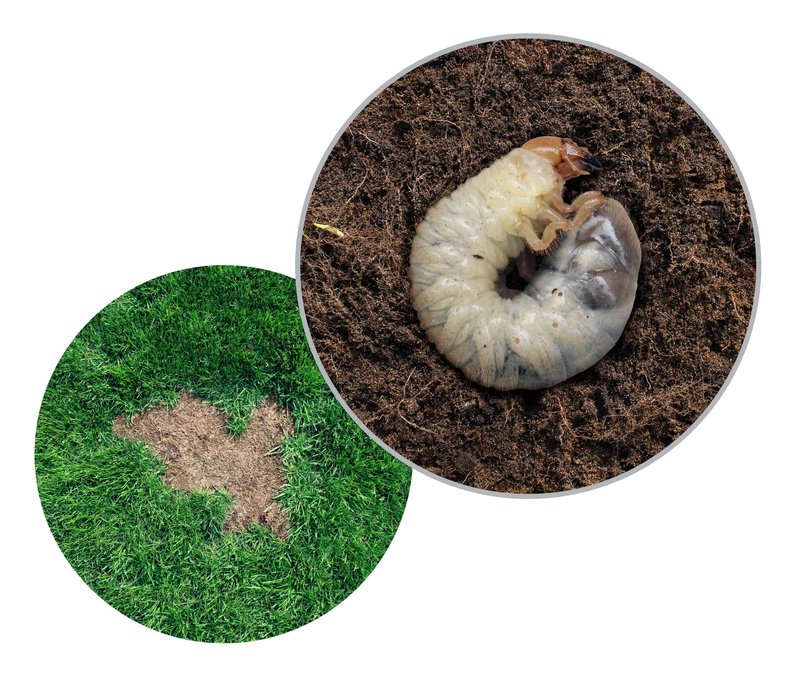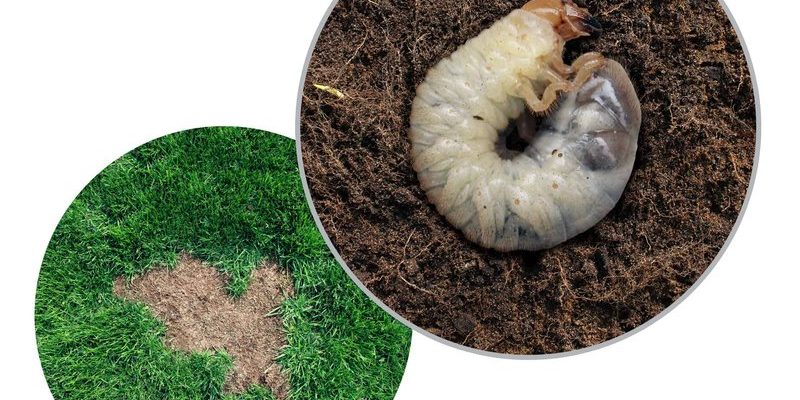
Grub worms are the larvae of beetles, specifically Japanese beetles, June bugs, and others. Their main mission? To munch on the roots of your grass, which can lead to dead patches and an overall sad landscape. It’s a bit like having a secret party crasher in your backyard, enjoying your grass while it quietly dies beneath them. So, if you’ve started to notice brown patches forming or an increase in birds pecking around your yard, it’s time to get acquainted with these infamous lawn invaders.
In this article, we’ll dive into what grub worms are, how to identify them, and strategies to deal with them before they turn your lawn into a graveyard of grass. You might be wondering how to spot these pests or what you can do to keep them at bay. Let’s get started!
What Exactly Are Grub Worms?
Grub worms are the immature, larval stage of certain beetles. While they may look harmless—they’re usually white or off-white, with a C-shaped body—they’re actually quite destructive. These larvae feed primarily on the roots of grass, which can lead to a lovely lawn becoming patchy and brown.
They thrive in warm, moist environments, making summer a prime time for grub infestations. If you think of your lawn as a buffet, grub worms see it as an all-you-can-eat feast. They have voracious appetites, and a large population can cause serious damage in a short time. So, if you’ve noticed your grass is thinning out or dying, grub worms could be to blame.
To put it simply, grub worms are not your garden’s best friend. They can be likened to uninvited guests that come in and consume everything you’ve worked hard to cultivate.
How to Identify Grub Worms in Your Lawn
Identifying grub worms isn’t as tricky as it sounds. The first step is to look for signs of damage in your lawn. If you see areas of grass that are yellowing, dying, or pulling up easily, this could indicate a grub problem. Here are a few ways to confirm your suspicion:
- Check for Thinning Grass: If some patches of your lawn are brown or wilting, it may be due to roots being eaten away.
- Look for Lifting Grass: If you can easily lift sections of grass, there’s likely a lack of roots. This is a telltale sign of grubs beneath the surface.
- Observe Animal Activity: If you notice an uptick in birds, raccoons, or skunks digging in your yard, they may be feasting on grubs.
You can also dig up a small section of your lawn—about 1 square foot and 3–4 inches deep. If you find several grubs in that area, it’s a clear indication you have a problem.
Grubs are generally most active in late summer to early fall, so keep an eye on your lawn during these times.
Why Do Grub Worms Matter?
You might be thinking, “Why should I care about a few little worms?” Well, here’s the thing: grub worms matter because they can ruin your lawn. A healthy lawn is not just about looks; it contributes to the overall health of your home environment. Here’s how grubs can impact not just your grass but also your entire yard:
1. **Lawn Health:** A lawn infested with grubs will struggle to absorb water and nutrients. This affects the overall health of your grass, making it more susceptible to diseases and other pests.
2. **Ecosystem Balance:** Your garden hosts a variety of living creatures. Grubs can disturb that balance, as they can attract birds and animals that dig in search of food, potentially damaging other plants in the process.
3. **Aesthetic Appeal:** Let’s face it, a lawn full of patches and dead spots is not a great look. If you enjoy having friends over or just want to enjoy your outdoor space, grub infestations can quickly kill the vibe.
Understanding the consequences of grub worms can help you take action sooner rather than later. The earlier you address a grub issue, the easier it will be to restore your lawn to its former glory.
How to Control Grub Worms
If you’ve discovered an infestation of grub worms, fear not! There are several ways to control and manage these pesky invaders. Here are some effective strategies:
- Cultural Control: Maintaining a healthy lawn is your first line of defense. Aerate your soil, water correctly, and mow at the right height. A strong lawn can withstand a small number of grubs.
- Beneficial Nematodes: These microscopic creatures are natural enemies to grub worms. They infect and kill the larvae, providing an organic way to manage the problem.
- Pesticides: If the infestation is severe, you might need to use a pesticide specifically designed for grubs. Look for products that target larvae and follow the instructions carefully to ensure safety and effectiveness.
You might also consider applying treatments in late summer or early fall, as this is when grub eggs hatch and the larvae begin to feed. Timing is essential in disrupting their lifecycle.
It’s important to strike a balance—over-treating your lawn with chemicals can harm beneficial insects. Always opt for the least harmful method first and work your way up if needed.
When to Seek Professional Help
Sometimes, despite your best efforts, you may find yourself facing a stubborn grub problem. In such cases, it might be time to call in the pros. Lawn care experts have access to more advanced treatments and can safely assess the extent of the infestation.
Consider seeking help if:
– **Your lawn looks perpetually damaged,** despite your treatments.
– **You’re unsure of the best treatment to use** or how to apply it correctly.
– **You have pets or small children,** as professional services can ensure that treatments are safe for your family.
Professionals also can offer ongoing maintenance, helping you prevent future infestations and keep your lawn looking its best all year round.
Preventing Grub Worms Before They Strike
The best way to deal with grub worms is to prevent them from invading in the first place. Here are some tips to keep your lawn grub-free:
- Regular Lawn Maintenance: Regularly aerating, watering, and mowing your lawn helps keep it healthy and more resistant to pests.
- Apply Grub Prevention: Some pesticides designed for prevention can be applied in early summer before the eggs hatch. Following instructions on the product will yield the best results.
- Encourage Healthy Soil: Healthy soil supports robust grass, making it harder for grubs to thrive. Add mulch or compost to enrich your soil.
By maintaining a proactive approach, you can significantly reduce the chances of grubs turning your lawn into their personal buffet.
Grub worms may be small, but they can have a big impact on your lawn and garden. Understanding what they are, how to identify them, and the best ways to control and prevent them can make a world of difference in maintaining a healthy outdoor space. Remember to keep your lawn in tip-top shape, and when in doubt, don’t hesitate to reach out for help. Taking action early will not only restore your lawn, but it will also allow you to enjoy your outdoor oasis without the worry of pesky invaders. Here’s to a healthy, vibrant lawn!

